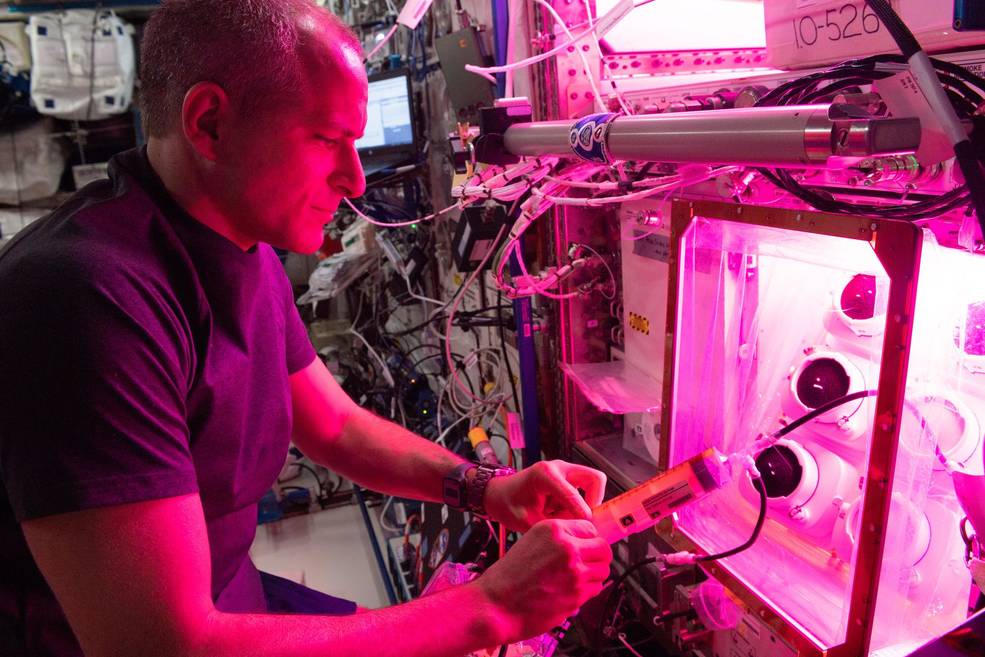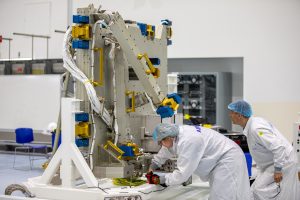

During SpaceX’s 20th Commercial Resupply Services Mission to the International Space Station for NASA, the Dragon cargo spacecraft will deliver about 4,500 pounds of supplies, equipment and numerous science investigations to the crew aboard the station. Among the science experiments are:
- Bartolomeo, a new commercial research platform from the European Space Agency, set to be installed on the exterior of the orbiting laboratory.
- Gut-on-Chip is an experiment that could provide a better understanding of how microgravity and other potential space travel stressors affect intestine immune cells and susceptibility to infection, which could protect astronaut health on future long-duration missions. It also could help identify the mechanisms that underlie development of intestinal diseases and possible targets for therapies to treat them on Earth.
- Advanced Combustion via Microgravity Experiments (ACME) project is a series of six independent studies of gaseous flames that will be conducted in the Combustion Integrated Rack onboard the orbiting laboratory.
- Aboard the space station, NASA will use the Japan Aerospace Exploration Agency’s Electrostatic Levitation Furnace (ELF) for two new experiments: Thermophysical Property Measurement investigation will study small spheres of metal to provide a better understanding of how to measure liquid metal properties; and the Origin of Fragility in High-Temperature Oxide Liquids experiment will investigate what happens when high temperatures are applied to those same small spheres of various metal oxides.
- The Advanced Colloids Experiment Temperature-2 (ACE-T-2) experiment will look at the complex structures of these micron-scale colloidal particles, and how they assemble in microgravity conditions. Using the electron microscope on board the International Space Station, scientists will observe these particle interactions when different temperatures are applied to them.
-

The Biological Research in Canisters – Light-Emitting Diode (BRIC-LED) facility powers six BRIC-LED canisters for the Biological Research In Canisters-Light Emitting Diode-002 (BRIC-LED-002) investigation. Image courtesy of Sarah Swanson and Simon Gilroy. Biological Research in Canisters-Light Emitting Diode-002 (BRIC-LED)-002 investigation will test whether spaceflight affects the ability of plants to defend themselves against pathogens. Research on plant function in microgravity also contributes to a better understanding of basic plant processes, which could support development of better agricultural practices on Earth.
- VEG-PONDS-03 will evaluate how plants, in this case lettuce, grow in a newly developed plant growth system known as PONDS, or Passive Orbital Nutrient Delivery System. The PONDS units have features that are designed to bypass the lack of gravity in order to distribute water. They also are able to increase the plant’s oxygen exchange and provide sufficient room for root growth. VEG-PONDS-03 is a direct follow-on to the VEG-PONDS-01 and VEG-PONDS-02 hardware and plant growth validation tests.
Research investigations sponsored by the U.S. National Laboratory include:
- adidas Boost in Space seeks to investigate the flow of nonuniform foam particles to study the mixing and packing behavior in the absence of gravity. Results will help inform manufacturing process of Adidas Boost shoe soles, which contain polymer particles fused together.
- Capillary-Driven Microfluidics in Space is a project that aims to perform capillary-driven microfluidics experiments in space. Experiments will include capillary filling of microstructures, particle focusing and plasma separation, and microfluidic flow in thermal gradients.
- Spherical Cool Diffusion Flames Burning Gaseous Fuels will seek to increase a fundamental understanding of the physics of cool diffusion flames by observing quasi-steady spherical flames on porous burners in microgravity. Although cool diffusion had been observed in earlier drop tower experiments, cool flames had never been observed as steady spherical flames because drop tower experiments had uneven burn rates.
- Droplet Formation Studies in Microgravity will seek to evaluate the water droplet formation, water flow, and pressure of Delta Faucet’s current H2Okinetic show head technology versus the industry-standard use of jet nozzles. H2Okinetic technology allows better control of droplet size and increases the speed of the drops, which creates a feeling of increased pressure for the end user.
